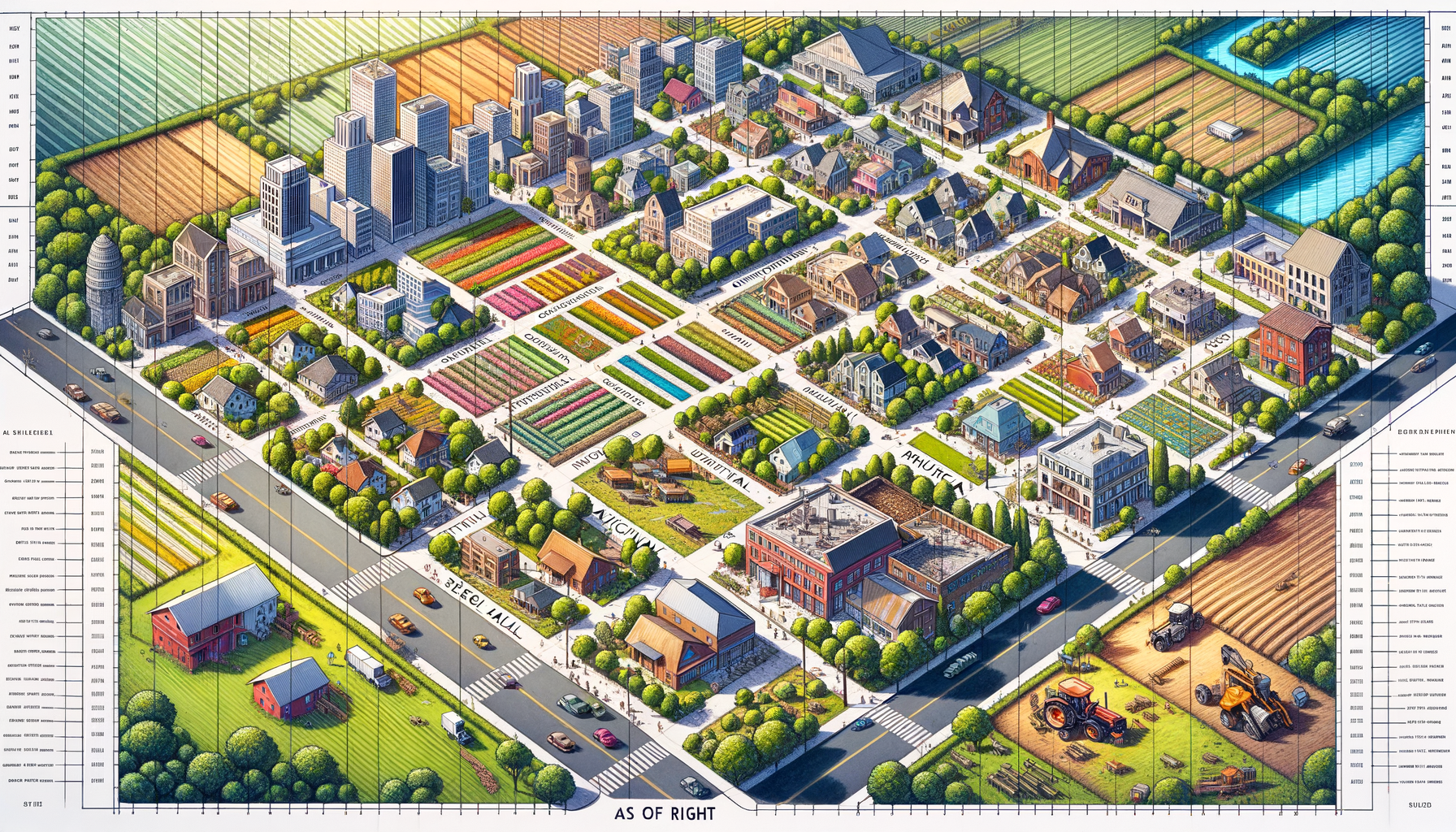“Understanding the Essentials of Development Zoning: A Comprehensive Guide”

Understanding property zoning and development might seem like an arduous task, especially if you’ve just ventured into the real estate industry. However, comprehending these concepts isn’t as tricky as it appears when broken down into digestible pieces. This article aims to provide a concise overview of urban zoning, the different zoning types, and how property development plays a critical role in this equation. The goal is to provide a clear and engaging understanding of these vital aspects of real estate.
Urban Zoning 101:
Urban zoning is the manner cities and other municipalities control property and land use. By grouping properties into zones, governments ensure that specific regions of their jurisdiction serve certain purposes. The central purpose of zoning laws is to separate residential, commercial, and industrial spaces to maintain order and safeguard health and safety.
Zoning laws have the power to influence a city’s growth direction, structuring where new enterprises can set up or where inhabitants can dwell. These regulations can also regulate aspects as varied as parking lot size, building height, the distance a structure can be from the street, or even aesthetic elements like color and design.
Several factors influence zoning decisions, including how each zone will affect community relations, ecological sustainability, real property values, and municipal growth patterns.
Types of Zoning:
One beneficial aspect of zoning is the separation and organization of real estate entities into various classes, making it more manageable for cities to develop and grow systematically. Below are some typical zoning categories:
• Residential: This is perhaps the most familiar type of zoning. It regulates where dwellings can be built and the number of houses that can reside on a specific lot.
• Commercial: Commercial zoning is typically designed for business-related structures, including offices, shopping centers, or entertainment venues.
• Industrial: This zoning type is meant for commercial sites that may present more potential hazards, such as factories or warehouses.
• Agricultural: Designed for regions dedicated to farming or livestock, agricultural zoning helps ensure that these areas are not interspersed with incompatible use.
• Rural: Rural zoning tends to cover large areas of land, often in regions that are not in immediate need of high-density housing, but instead may be more appropriate for ranches or low-density housing.
• Historic: Some regions have particular historical significance where structures often have unique protection guidelines to preserve their historic character.
• Aesthetic: Some cities or towns choose to implement aesthetic zoning to maintain a particular look or feel for the community.
Impact of Zoning on Real Estate Development:
Understanding zoning regulations is critical for anyone interested in property development, as these rules will dramatically influence what can be built on any given parcel of land. It’s vital to ensure that the property’s zoning aligns with your intended usage.
For instance, investing in a property with the intention to build residential housing, only to discover that it is zoned for commercial use, presents a significant hurdle that will implicate financial and temporal losses. Navigating zoning laws might seem challenging, but they are indeed an essential guide in formulating a successful real estate development strategy.
Different Zoning Strategies:
Depending on specific investment goals, there are two main zoning strategies investors can focus on:
• “As-of-Right” Strategy: This means investing in areas where the current zoning laws already support the intended usage of the property. For instance, purchasing a residentially zoned property with the intention of building a home would fall into this category.
• Change-of-Use Strategy: This strategy involves purchasing property with the intention of changing its usage, which typically requires a zoning amendment. Although this can be a more cumbersome route, it can often lead to high returns if the approval is obtained.
Zoning can incite various property value changes. Often, when zoning changes allow for higher-intensity use (for example, changing from residential to commercial zoning), the land value tends to increase. However, it’s important to remember that the opposite can also occur.
Navigating Zoning Restrictions and Variances:
For property developers, zoning restrictions can often appear like obstacles on the path to creating their vision. However, it is possible to request a zoning variance, a form of regulatory relief that allows property developers to use land in a way that is not generally permissible under current zoning law. The process usually involves presenting the case before a local zoning board or commission.
However, securing variances is not a straightforward task. Typically, the applicant must demonstrate that enforcing the zoning regulation generates unnecessary hardship and that granting the variance will not negatively impact the surrounding area. They also have to prove the intended use is beneficial for the community or is in line with the municipality’s long-term planning goals.
In conclusion, while urban zoning may at first seem a daunting aspect of real estate, understanding its fundamentals and how it shapes development projects is indispensable for investors and developers. Being aware of different zoning types, the strategic implications of zoning on development, and the possibility of variances gives a significant advantage in navigating this complex but vital field. Just as a home builder needs the right tools to construct a house effectively, a real estate investor needs a thorough knowledge of zoning to build a successful portfolio.
